The Simpsons Predictions That Actually Happened
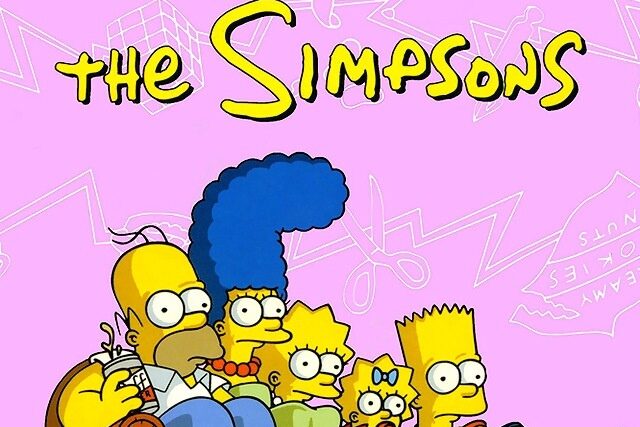
For over three decades, this animated family has been a source of laughter, satire, and, perhaps most mysteriously, an uncanny number of accurate predictions about the future. From technological leaps to shocking political turns, here are 21 eerie “Easter eggs” from the show that seemed like pure comedy at the time, only to materialize in the real world years later.
1. Donald Trump’s Presidency
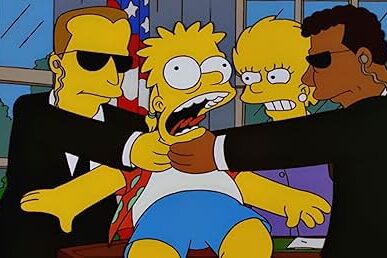
In the 2000 episode “Bart to the Future” (Season 11, Episode 17), Lisa Simpson is shown as the first straight female President of the United States, inheriting a budget crisis from her predecessor, Donald Trump. The episode presents Trump’s presidency as a surreal, cautionary tale 16 years before he was actually elected in 2016. Show creator Matt Groening explained that the joke was intended to be “a warning to America,” representing the absolute bottom of the barrel politically. The scene where Lisa mentions inheriting his debt crisis is particularly chilling, showing the show’s writers had a remarkably sharp, if pessimistic, finger on the pulse of celebrity politics that would eventually become reality.
2. Smartwatches and Video Calling
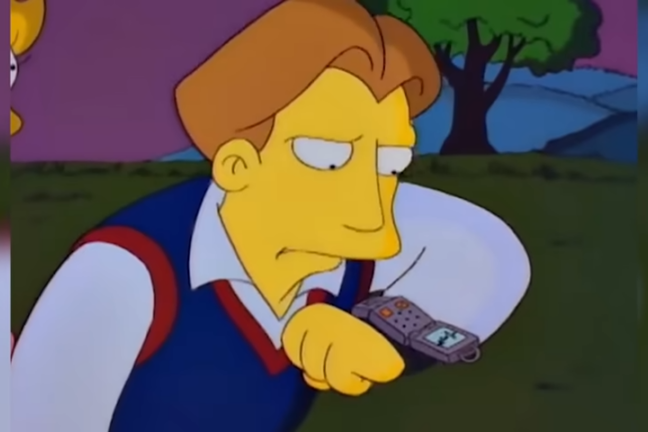
The 1995 episode “Lisa’s Wedding” (Season 6, Episode 19) offered a glimpse 15 years into Lisa’s future, depicting a London where her fiancé, Hugh Parkfield, uses a wristwatch to communicate. This device, a proto-smartwatch, allows him to make calls directly from his wrist. In the same episode, Lisa video calls Marge using a picture phone, an early concept for widespread video chat technology like FaceTime and Skype. The show aired nearly two decades before smartwatches became a mainstream reality with the releases of devices like the Pebble and the Apple Watch, demonstrating the writers’ foresight into how communication technology would shrink and integrate into everyday life.
3. The Siegfried and Roy Tiger Attack
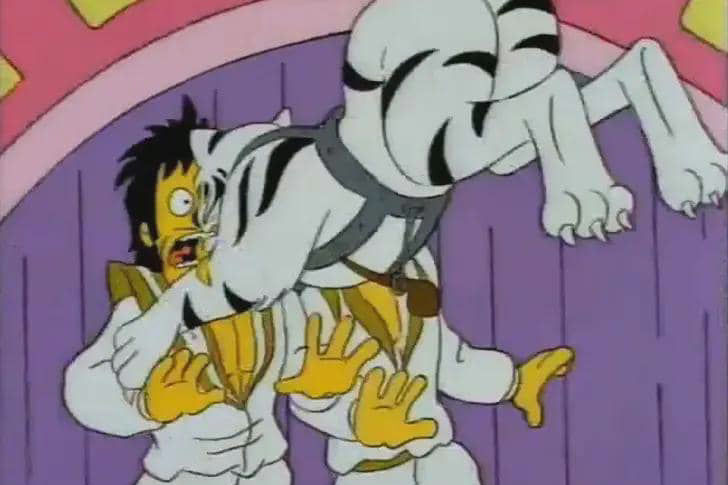
In the 1993 episode “$pringfield (Or, How I Learned to Stop Worrying and Love Legalized Gambling)” (Season 5, Episode 10), Mr. Burns opens a casino, featuring a magical act by “Gunter and Ernst,” a clear parody of the famous German illusionist duo Siegfried and Roy. During the performance, Gunter and Ernst are savagely mauled on stage by their own white tiger. A decade later, in 2003, Roy Horn of Siegfried and Roy was indeed attacked by his white tiger, Mantecore, during a live Las Vegas show. The attack left Horn with critical injuries and ultimately led to the closure of their act, an uncanny and dark echo of the show’s dark humor.
4. Faulty Electronic Voting Machines
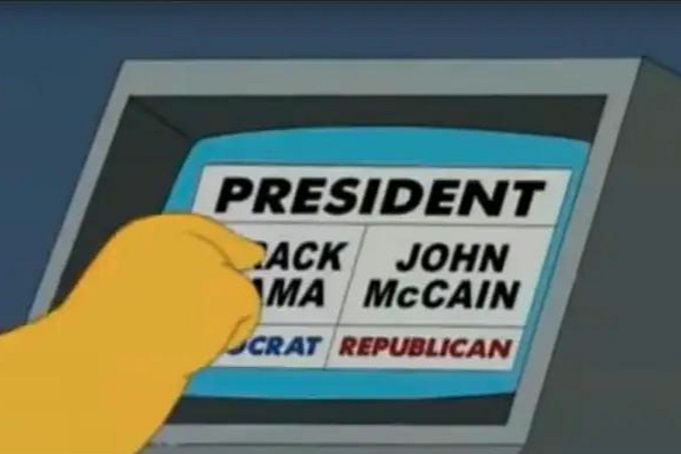
The 2008 “Treehouse of Horror XIX” (Season 20, Episode 4) segment opened with Homer attempting to vote for Barack Obama on an electronic voting machine. No matter how many times he pressed the button for Obama, the machine repeatedly registered the vote for Republican candidate John McCain. Homer eventually gets swallowed by the machine in his struggle. In the 2012 presidential election, a video went viral showing a real-life electronic voting machine in Pennsylvania malfunctioning, repeatedly switching a vote cast for Barack Obama to Mitt Romney, causing widespread concern about election integrity. This gag proved to be a startlingly accurate prediction of a very real technical flaw in democratic processes.
5. Disney Buys 20th Century Fox
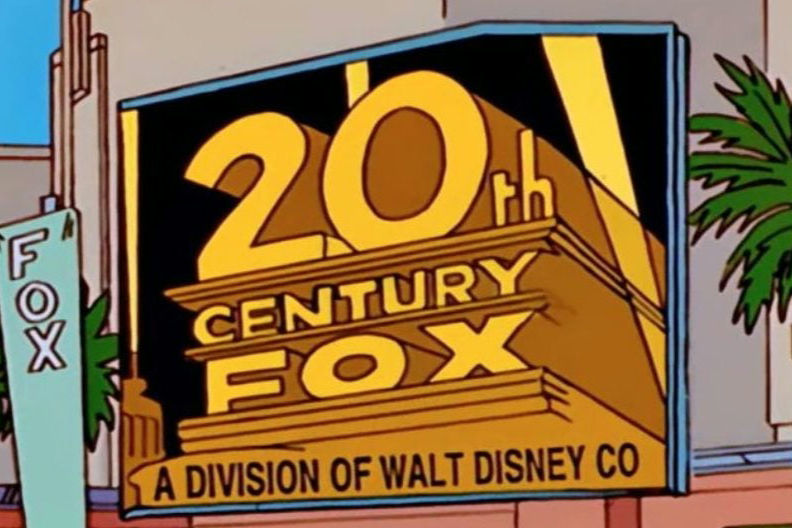
In the 1998 episode “When You Dish Upon a Star” (Season 10, Episode 5), Homer becomes an assistant to celebrities Alec Baldwin and Kim Basinger. The episode features a very quick, throwaway visual joke showing the 20th Century Fox logo with the addition of a small sign underneath that reads, “A Division of Walt Disney Co.” This gag aired two decades before the actual, massive media merger that saw The Walt Disney Company officially acquire 21st Century Fox, including its film and TV studios, in 2019. This blink-and-you’ll-miss-it background detail is often cited as one of the show’s most precise and surprising corporate predictions.
6. The Horse Meat Scandal

In the 1994 episode “Sweet Seymour Skinner’s Baadasssss Song” (Season 5, Episode 19), Lunchlady Doris is seen stirring a large cauldron, substituting horse meat for beef in the school’s lunch menu. This was played for laughs as a sign of the school’s extreme cost-cutting. However, in 2013, a major controversy rocked Europe when it was discovered that numerous beef products being sold in supermarkets and as part of the food supply chain had been secretly contaminated with, or entirely substituted by, horse meat. The similarities, from the ingredient substitution to the surprise reveal in the food supply, made the 19-year-old cartoon joke feel remarkably prophetic.
7. The Higgs Boson (God Particle) Equation
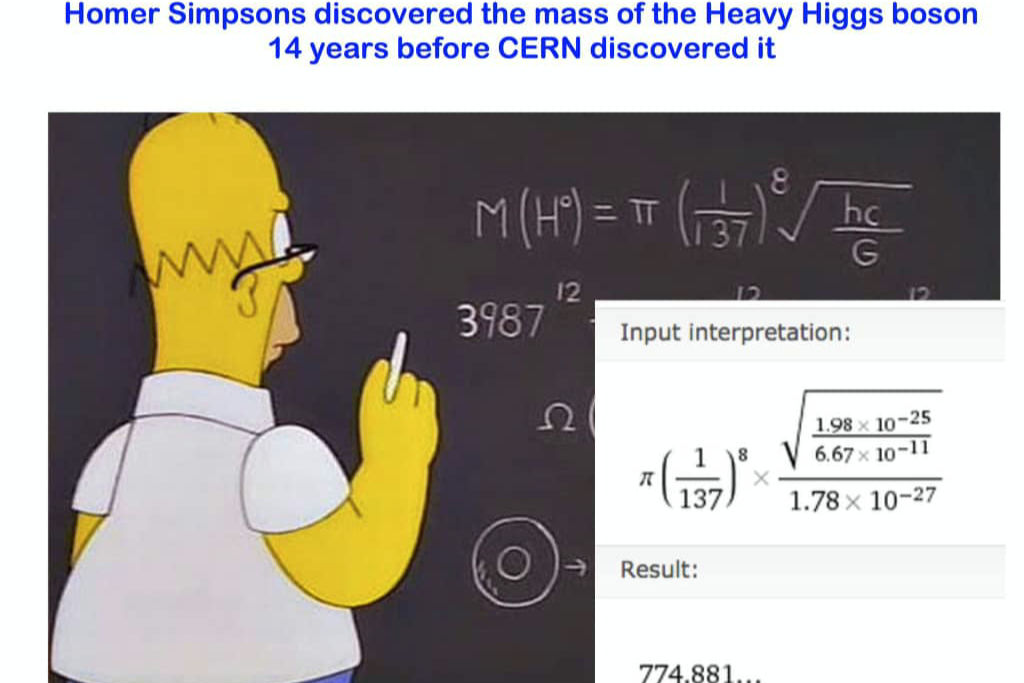
Homer attempts to become an inventor in the 1998 episode “The Wizard of Evergreen Terrace” (Season 10, Episode 2), inspired by Thomas Edison. In a scene, Homer writes a complex equation on a chalkboard. According to Simon Singh, author of The Simpsons and Their Mathematical Secrets, the equation predicts the mass of the Higgs boson particle, or “God particle,” which was not formally discovered by the CERN Large Hadron Collider until 2012, 14 years after the episode aired. Given that several Simpsons writers have advanced degrees in mathematics and physics, the equation was likely an intentional nod, but its numerical proximity to the later actual discovery remains an astonishing coincidence.
8. Blinky the Three-Eyed Fish

One of the show’s most enduring images is Blinky, the three-eyed fish, first seen in the 1990 episode “Two Cars in Every Garage and Three Eyes on Every Fish” (Season 2, Episode 4). Blinky is discovered by Bart in the polluted waters near the Springfield Nuclear Power Plant, a symbol of Mr. Burns’ ecological negligence. In 2011, near a nuclear power plant in Córdoba, Argentina, a local fisherman caught a wolf fish that had three eyes. The real-life mutated fish became an immediate sensation and an almost direct, unsettling parallel to the cartoon’s commentary on environmental impact and corporate pollution.
9. The Ebola Outbreak
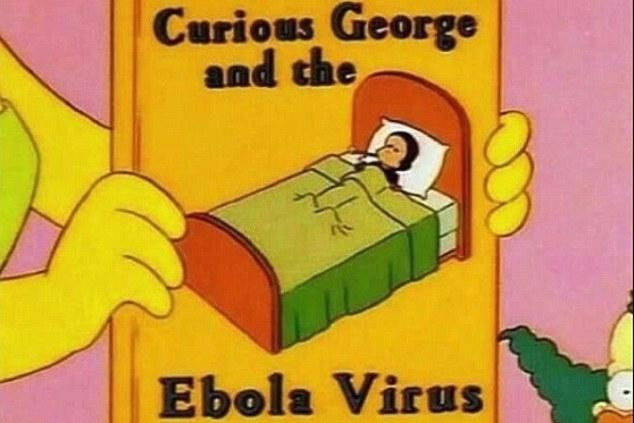
The 1997 episode “Lisa’s Sax” (Season 9, Episode 3) features a moment where Marge attempts to cheer up a sick Bart by reading him a children’s book titled Curious George and the Ebola Virus. The cover of the book clearly features the title, and Bart’s illness is serious enough to keep him out of school. While the Ebola virus had been known to science for some time, this seemingly random inclusion of the specific, then-obscure, deadly virus gained attention during the 2014 Ebola outbreak in West Africa. The scene became viral in light of the real-world crisis, with many viewers believing the show predicted the scale of its public awareness and fear.
10. The Shard Skyscraper in London
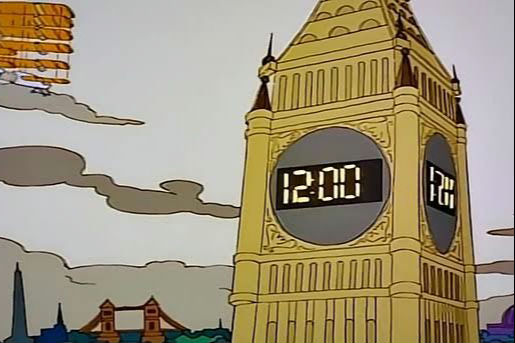
Returning to “Lisa’s Wedding” (Season 6, Episode 19), as Lisa and Hugh explore London in the futuristic 2010 setting, the London skyline features a distinctive, shard-like skyscraper. This angular, glass-covered building is strikingly similar to The Shard, a real-life, 95-story skyscraper that became a central feature of the London skyline. The Shard’s construction did not begin until 2009, and it wasn’t completed until 2012, meaning the cartoon precisely depicted a unique, future architectural landmark a full 14 years before it began construction, confirming the episode’s surprising foresight into London’s urban development.
11. Autocorrect Fails
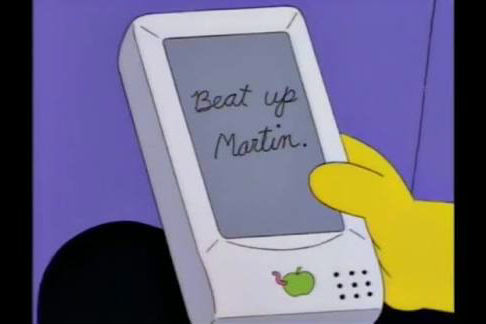
The 1994 episode “Lisa on Ice” (Season 6, Episode 8) features a device called a “Newton,” a portable electronic notepad. School bullies Kearney and Dolph use the Newton to write a reminder: “Beat up Martin.” However, the device’s rudimentary text correction changes the note to “Eat up Martha.” The “Newton” was a parody of Apple’s real-life Newton MessagePad, which famously struggled with handwriting recognition, leading to frustrating and comical errors. Years later, the widespread adoption of smartphones and tablets brought about the common experience of “autocorrect fails,” where algorithms substitute intended words with nonsensical or embarrassing alternatives, making the Simpsons gag a precursor to a pervasive modern-day annoyance.
12. Greece’s Financial Crisis
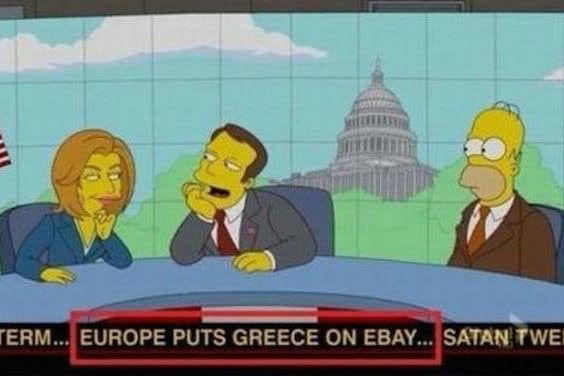
In the 2013 episode “The Saga of Carl” (Season 24, Episode 21), Homer, Moe, Lenny, and Carl win the lottery. Carl runs off with the winnings to his homeland, Iceland. During a scene in an Icelandic bar, a news chyron scrolls across the screen that reads: “Europe puts Greece on eBay.” This joke, referencing the dire financial situation and massive debt faced by Greece, aired at a time when the country was still deeply entrenched in its sovereign debt crisis, often requiring bailouts from the European Union. The line proved to be a concise and dark summation of Greece’s economic dependency and the perception of its financial vulnerability.
13. FIFA Corruption Scandal
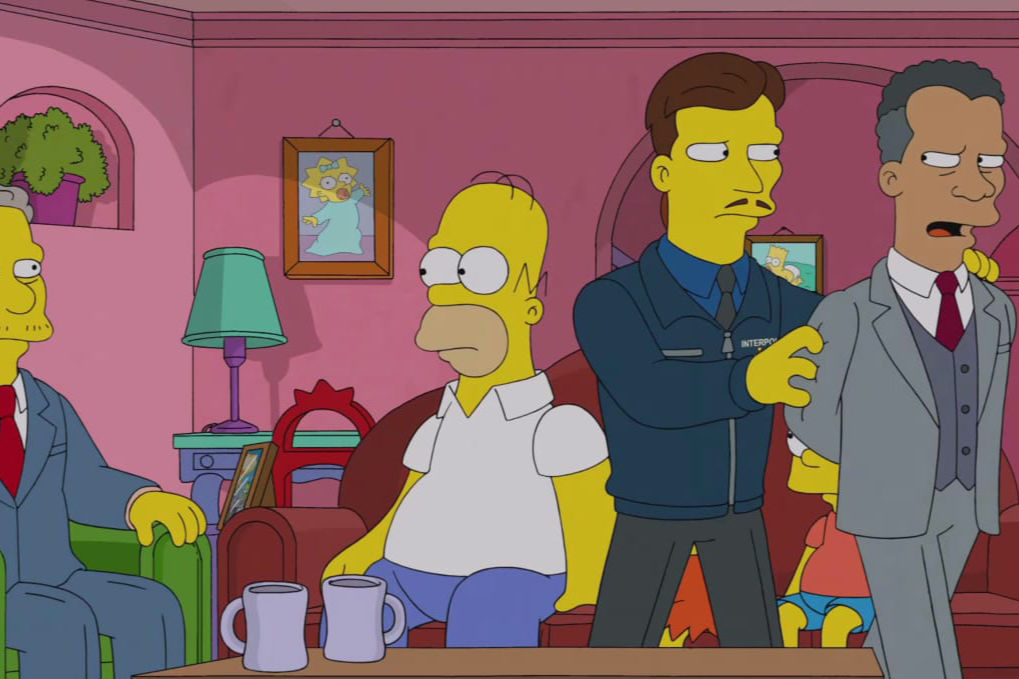
The 2014 episode “You Don’t Have to Live Like a Referee” (Season 25, Episode 16) follows Homer as he becomes a World Cup referee. The episode features an indictment of numerous top FIFA officials, who are arrested in a raid by international authorities. The cartoon aired one year before the actual, massive real-life corruption scandal rocked the governing body of world soccer, FIFA, in 2015. The scandal involved multiple high-ranking officials being indicted on charges of wire fraud, racketeering, and money laundering, mirroring the swift, public arrests depicted in the satirical episode.
14. The COVID-19 Pandemic
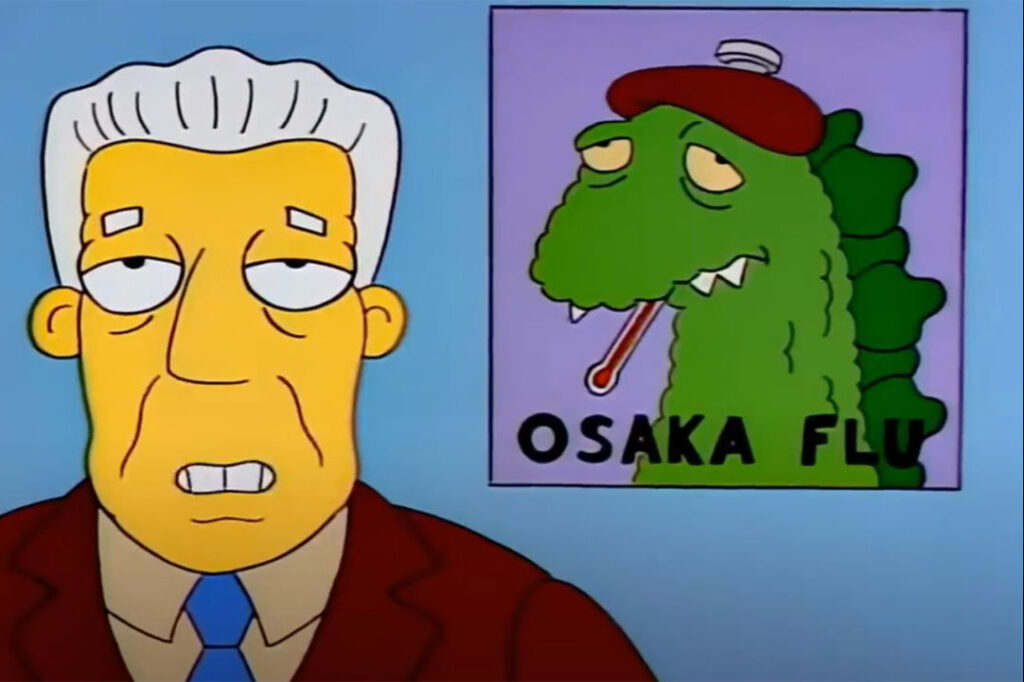
The 1993 episode “Marge in Chains” (Season 4, Episode 21) depicts a widespread virus originating from Asia, called the “Osaka Flu.” The illness is shown to spread to Springfield after a sick factory worker in Japan coughs into a package being shipped to the town. The Springfield residents, in a panic, eventually riot. While the episode does not predict the exact details of the COVID-19 pandemic, the visual of a disease originating in Asia and rapidly spreading worldwide via packaging, leading to mass panic and social breakdown, was widely circulated in 2020 as a remarkably prescient piece of animated satire.
15. Richard Branson’s Space Tourism
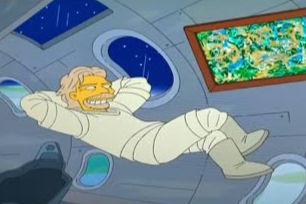
In the 2014 episode “The War of Art” (Season 25, Episode 15), British businessman and Virgin Group founder Richard Branson makes a cameo. He is shown floating serenely inside a spaceship, enjoying the weightlessness of a commercial spaceflight. Seven years later, in 2021, the real Richard Branson made a high-profile sub-orbital spaceflight aboard his company Virgin Galactic’s VSS Unity, fulfilling his long-standing goal of pioneering space tourism. The show’s depiction of the eccentric billionaire enjoying space travel proved to be a spot-on vision of a future venture he was determined to realize.
16. Lady Gaga’s Super Bowl Halftime Show
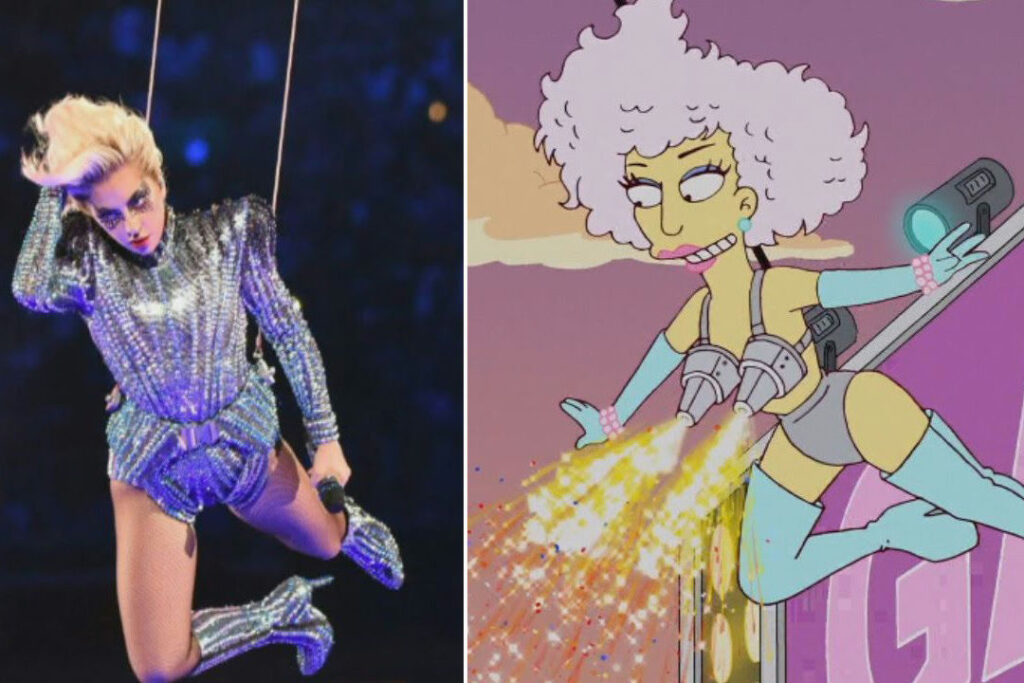
Lady Gaga guest-starred as herself in the 2012 episode “Lisa Goes Gaga” (Season 23, Episode 22). During her appearance, the pop star performs a concert in Springfield while suspended in the air by wires, flying over the audience. Five years later, during her 2017 Super Bowl LI Halftime Show, Lady Gaga opened her performance by descending from the roof of the stadium into the center of the field while suspended by wires, a direct parallel to the surreal, high-flying antics first seen in the cartoon. This was a clear instance of real-life choreography appearing to imitate the show’s creative vision.
17. Nobel Prize Winner Prediction
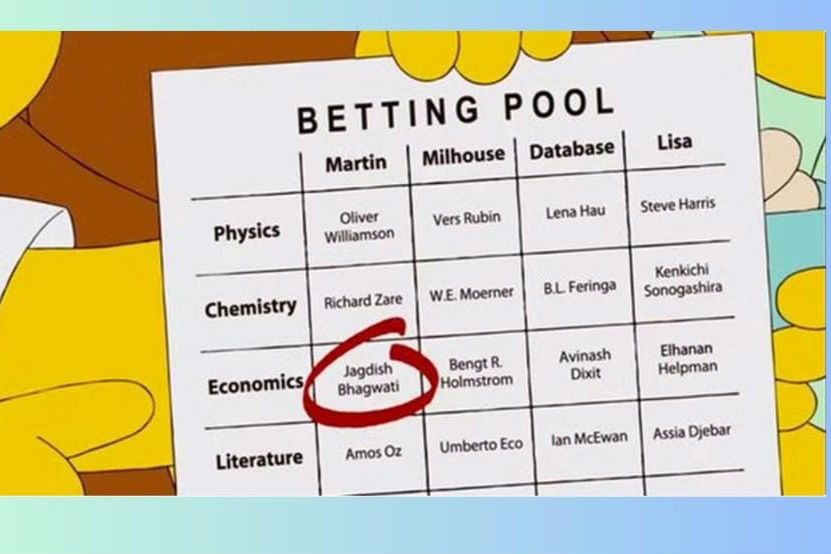
In the 2010 episode “Elementary School Musical” (Season 22, Episode 1), a throwaway joke involves Lisa and Milhouse looking up Nobel Prize winners on a computer. On the list is a section for “Economics,” where Milhouse explicitly bets on Bengt R. Holmström. Six years later, in 2016, Finnish economist Bengt R. Holmström was officially awarded the Nobel Memorial Prize in Economic Sciences. While the show’s writers admitted they simply picked a credible academic name from the field, the inclusion of the exact future winner’s name in a simple gag is an astonishing fluke of trivia that cemented its place in the show’s predictive canon.
18. The Shifting Color of Twitter (X)
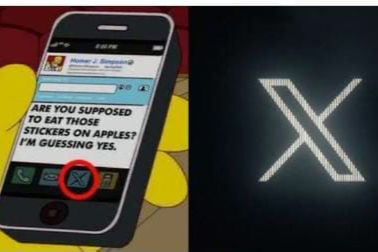
A 2010 episode, “Boy Meets Curl” (Season 21, Episode 12), contains a brief background gag that shows Homer checking his phone. The image on the screen depicts a social media app logo. While the details are vague, the screen shows a small, lettered logo, which some fans have interpreted as an early, monochromatic version of Twitter, the social media platform. After Elon Musk’s takeover in 2022, he rebranded Twitter to “X,” drastically changing the iconic blue bird logo to a simple, black-and-white ‘X’ symbol. The shift from a recognizable logo to a minimalist, single-letter icon echoed the look of the generic app Homer uses a full 13 years earlier.
19. Censorship of Michelangelo’s David
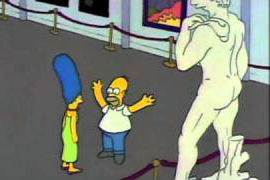
In the 1990 episode “Itchy & Scratchy & Marge” (Season 2, Episode 9), a group of outraged Springfield residents protest the arrival of Michelangelo’s Renaissance masterpiece, the statue of David, due to its explicit nudity. Marge defends the artwork’s artistic merit, but the town is scandalized. Over 30 years later, in 2023, a Florida school principal was forced to resign after parents complained that a lesson involving the statue was pornographic and violated a new state law. The controversy perfectly mirrored the cartoon’s satire of censorship, demonstrating that the cultural battle over classic art and perceived indecency remains timeless.
20. The Rise of Robot Librarians
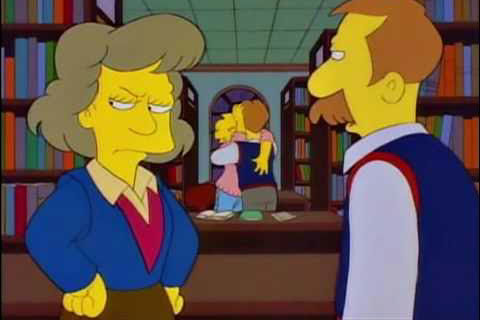
The 1995 episode “Lisa’s Wedding” (Season 6, Episode 19) is a goldmine of technological predictions. In the futuristic 2010 London, a robotic librarian, with a cold, metallic voice, is seen working at a library. This robot handles book cataloging and retrieval, showcasing automation in white-collar fields. Though not yet commonplace globally, many libraries today use RFID technology for automated check-out and sorting, and some modern facilities, particularly in Asia, have started implementing full robotic assistants for fetching and cataloging books, making the Simpsons prediction of automated public service increasingly real.
21. The Beatles Fan Mail Response
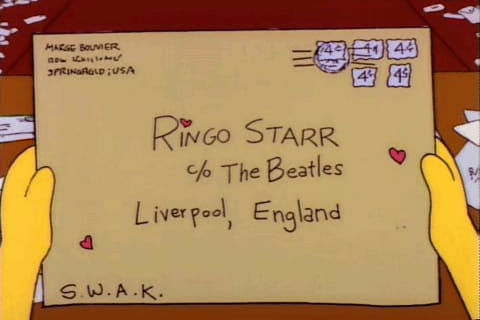
In the 1991 episode “Brush with Greatness” (Season 2, Episode 18), Marge reminisces about painting a portrait of Ringo Starr as a teenager and mailing it to him. In the flashback, Starr is seen in his home, promising to answer all his fan mail, “even if it takes me another 20 years.” In 2024, more than six decades after two young girls sent a fan video to Ringo Starr’s bandmate Paul McCartney, McCartney released a heartfelt, recorded video response. The sheer delay and eventual, personal reply to a decades-old fan message perfectly echoed the cartoon’s humorous plot point about a famous musician finally responding to ancient fan mail, closing the circle on this unusual prediction.
It’s fascinating to look back and see how often the cutting-edge satire of The Simpsons has morphed into real-life events. Whether it’s a testament to the sharp intellect of the show’s writers, the cyclical nature of history, or just plain luck, these “Easter eggs” are a delightful reminder that sometimes, the silliest jokes end up holding the most profound truth about our future.
This story 21 Easter Eggs in The Simpsons That Predicted the Future (and You Didn’t Realize It) was first published on Daily FETCH


